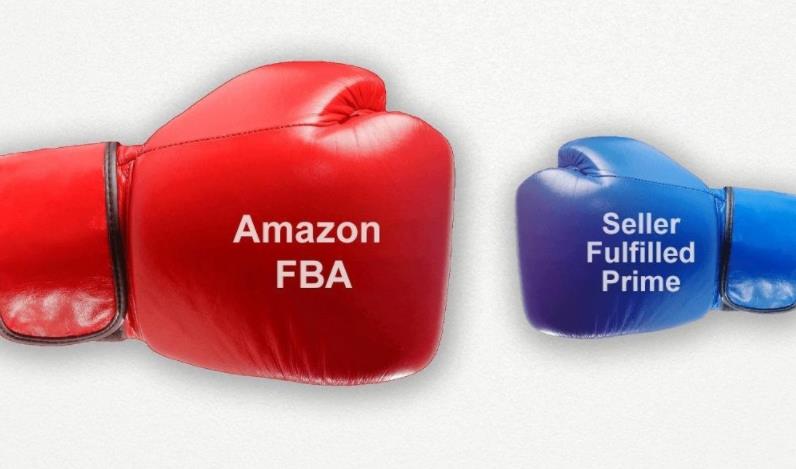Amazon Fulfilled vs Seller Fulfilled
- 18/10/2022
- Philip K
Amazon is the lifeblood of countless online merchants around the world, and Amazon FBA and Prime for seller fulfillment are widely used by many e-commerce companies around the world to support their fulfillment and shipping operations. However, the two are very different in several important ways – all of which greatly affect how online merchants fulfill and ship their orders to customers.
This guide takes a closer look at what FBA and Seller Fulfillment Prime are and examines the key differences between them in detail.

What is Amazon FBA?
FBA, or Amazon Logistics Services, means that Amazon opens its platform to third-party sellers, incorporates its inventory into Amazon’s global logistics network, and provides them with picking, packing, and terminal delivery services, for which Amazon charges a service fee.
What is Amazon FBM?
FBM is known as Fulfillment by Merchants or, meaning seller self-delivery.
Simply put, it means that sellers deliver their orders sold on Amazon, Amazon only as a sales platform, from inventory, packaging, delivery, customer service and a series of processes are the responsibility of sellers themselves.
What is Seller Fulfilled Prime?
Seller Fulfillment Prime is another very popular Amazon fulfillment program that allows merchants who meet the criteria to deliver products from their warehouses to domestic Amazon Prime customers. In turn, this is in exchange for shipping services provided by a Seller Fulfilled carrier.
Requirements to become a Seller Fulfilled Prime merchant include:
Benefits of Seller Fulfilled Prime
FBA vs. Seller Fulfilled Prime: 5 Key Differences
If you choose an Amazon FBA account, Amazon will take full responsibility for your fulfillment operations, from picking and packing to shipping. All online merchants need to do is make sure their inventory is currently in one of Amazon’s warehouses, and the e-commerce giant will take it from there. However, merchants who choose this route must pay a fulfillment fee to Amazon for this service.
On the other hand, if you choose the seller fulfillment Prime service, the only fee you pay is the shipping fee. Merchants can take advantage of the Amazon Prime brand and its shipping rules, but all other aspects of fulfillment are their responsibility.
With FBA, a merchant’s inventory is stored in Amazon’s distribution centers for a fee. It is important to note that these fees vary depending on the time of year, size of the item, and length of storage. For example, items stored before and during the holiday season from October to December incur more fees than items stored at other times of the year.
For online merchants using the Seller Fulfilled Prime program, it is necessary to have their warehouse store inventory. Importantly, merchants on the Seller Fulfilled Prime program must ship Prime program orders the same day they are received, which means their warehouse operations should be as efficient and streamlined as possible.
Amazon FBA fees include warehousing, picking, packaging, shipping, returns, and customer service.
Choosing Seller Fulfilled Prime does not incur any of these fees, but it does mean that your own company must have a way to store, fulfill, and ship orders regularly.
To focus on other aspects of their business, online merchants who prefer to let go of inventory may prefer the Amazon FBA program. By relinquishing control of their inventory, merchants are free to focus on other business needs. However, they also cannot check the status of their inventory as it is in Amazon’s distribution centers and may have a more difficult time deciding exactly what is in stock and which items should be replaced due to low sales or being out of season. It is also important to note that storing items that are more than 6 months old can incur penalties.
With “seller fulfillment” Prime, merchants maintain complete control over their inventory. This means that they must maintain their warehouse operations and can make changes to their inventory very easily.
With FBA, Amazon handles every return request, accepts returns at any of its distribution centers, and handles all customer service related to the return of items.
With seller-owned Prime, your own business is responsible for handling returns. This requires you to have dedicated customer service and returns departments, but also minimizes the chance of customer fraud and provides more transparency into why and when items are returned.
Conclusion
As Amazon Prime members continue to grow and the cost of selling to them rises, SFP offers sellers a great option for better profit potential and a more flexible scale. Sellers will need to be committed and operationally sound to meet Amazon’s strict qualifications.
Honest FulPhilment is a professional e-commerce third-party fulfillment site. If you need help evaluating your options, then choosing us is a great way to go.
Amazon Fulfilled vs Seller Fulfilled FAQ
Need a Quick Quote?
– Competitive price
– Quote within 24 hours
– 30+ Shipping methods
– Dedicated account manager
– Shopify/Woo integrations
– Autofulfil
– Auto tracking
– Plus much, much more

5 Best Wholesale Home Decor Suppliers 2023



10 Best Bikini Brands For Summer 2023








